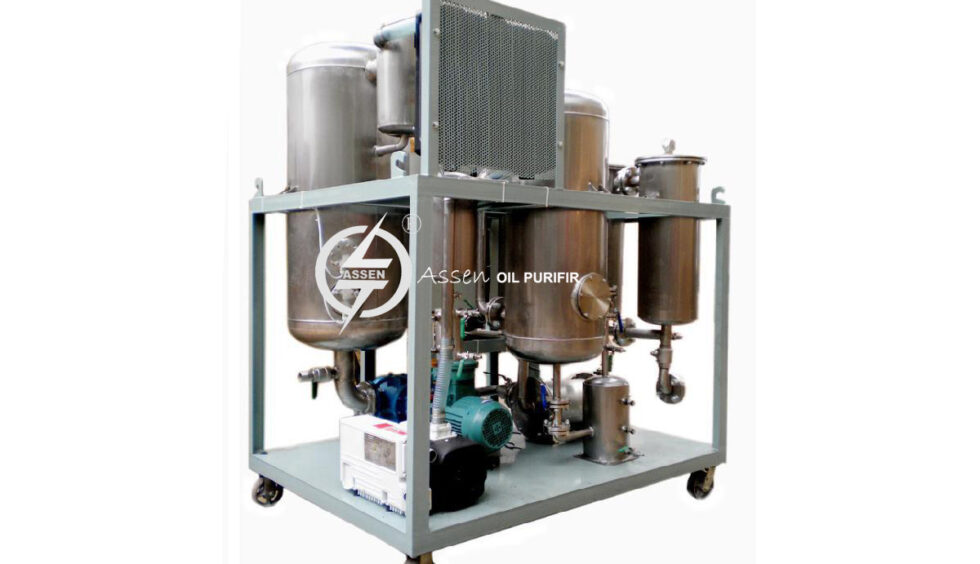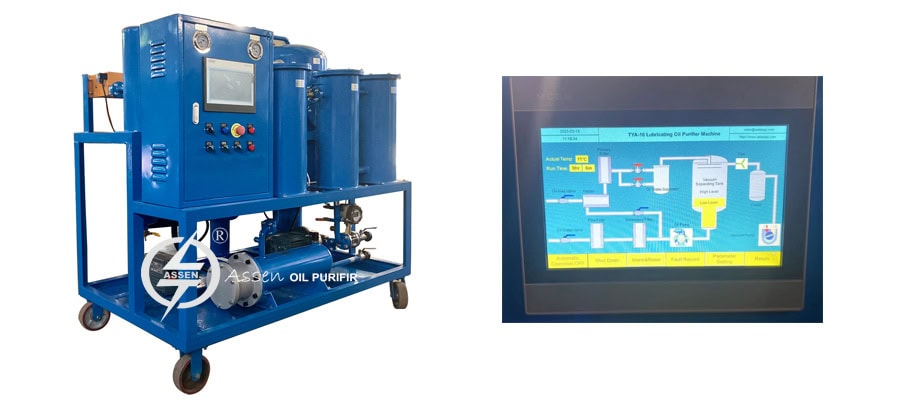What is Phosphate Ester Fluids?
Phosphate esters are synthetic compounds that do not occur naturally in the environment. They are commonly used as flame retardants and lubricant additives. In the context of lubricants, phosphate esters exhibit characteristics that make them suitable for a wide range of applications. Their ability to withstand high temperatures and pressures makes them valuable in maintaining equipment performance under demanding conditions.
Why Proper Phosphate Ester Fluids Filtration is Crucial?
Proper phosphate ester fluids filtration is essential for preventing equipment damage and extending the life of both the fluid and the equipment itself. Without adequate filtration measures in place, contamination can lead to detrimental effects on industrial machinery.
Preventing Equipment Damage:
Contaminants present in phosphate ester fluids can cause abrasive wear on critical components within hydraulic systems and turbines. This wear can result in reduced operational efficiency and costly repairs or replacements.
Extending Fluid and Equipment Life:
Effective filtration helps maintain the integrity of phosphate ester fluids by removing harmful contaminants that could otherwise degrade the fluid over time. By preserving the quality of the fluid, filtration contributes to prolonged equipment life and sustained operational performance.
The importance of understanding phosphate ester fluids goes beyond their chemical composition; it encompasses their practical significance in industrial operations where they are extensively employed.
Moreover, preventive maintenance for hydraulics is crucial in identifying potential issues before they escalate into major problems. By establishing a regular maintenance schedule and adhering to safety regulations through effective preventive maintenance practices, one can create a secure and reliable hydraulic system.
Practical Tips for Effective Phosphate Ester Fluids Filtration
Phosphate ester fluids filtration necessitates a strategic approach to ensure optimal performance and longevity of industrial equipment. Implementing continuous filtration is essential, supported by the selection of the right filtration system and diligent monitoring of filtration effectiveness.
Establishing a regular hydraulic system maintenance schedule is critical for maintaining hydraulic systems properly. The schedule should include routine tasks such as inspections, fluid checks, filter replacements, and seal examinations. Additionally, using the right hydraulic fluid, keeping the system clean, and having a plan in place for repairs and replacements are essential components of an effective preventive maintenance schedule.
Implementing Continuous Filtration
Continuous filtration is a proactive measure that involves the ongoing removal of contaminants from phosphate ester fluids. This approach is crucial for maintaining the integrity and functionality of the fluids, thereby safeguarding the equipment they support.
Choosing the Right Filtration System
When selecting a filtration system for phosphate ester fluids, it’s imperative to consider factors such as phosphorus concentration levels and hydrocarbon chain length. Comparative data has shown that different phosphate ester additives exhibit varying performance under different drilling conditions. For instance, very-high-phosphorous-level phosphate esters demonstrate sustainable performance under lower drilling conditions, while high-phosphorous-level and medium-phosphorous-level additives provide better lubrication under higher drilling conditions. Understanding these nuances is vital in choosing a filtration system tailored to specific operational requirements.
Monitoring Filtration Effectiveness
Monitoring the effectiveness of filtration systems involves detecting TnBP, TCP, and phosphate ester levels in sediments and air. River sediments in industrial areas contaminated with triaryl-based hydraulic fluids have been found to contain phosphate ester levels ranging from 0.1–1 μg/g. Additionally, it’s estimated that up to 80% of phosphate ester consumption in commercial and military use is lost to unrecovered leakage. By leveraging this knowledge, industries can establish robust monitoring protocols to ensure efficient filtration and mitigate potential losses due to contamination.
Addressing Common Filtration Challenges
Challenges in phosphate ester fluids filtration often revolve around dealing with hard-to-remove contaminants and ensuring proper dehydration techniques.
Dealing with Hard-to-Remove Contaminants
The behavior of hard-to-remove contaminants varies based on their composition and size. Advanced filtration media such as ASSEN™ filters tailored to the in-service quality of phosphate ester lubricants offer specialized solutions for addressing these challenges. Our advanced filter media designed for maintenance with Acid Numbers, while tailored for restoration with Acid Numbers >0.5 mg KOH/g.
Ensuring Proper Dehydration Techniques
Proper dehydration techniques are critical for maintaining fluid stability and preventing adverse effects caused by water contamination. Effective methods involve utilizing advanced technologies like NDIR optical absorption techniques to detect subtle changes in fluid properties due to water ingress.
Incorporating these practical tips into phosphate ester fluids filtration practices enhances operational reliability while mitigating potential risks associated with contamination.
Wrapping Up
The Importance of Regular Maintenance
Regular maintenance is a cornerstone of phosphate ester fluids filtration, ensuring the sustained performance and longevity of industrial equipment. Scheduled checks and balances are instrumental in identifying potential issues early on, allowing for timely interventions to prevent equipment damage and operational disruptions.
Scheduled Checks and Balances:
Implementing a comprehensive maintenance schedule involves regular inspections, fluid analysis, and filtration system assessments. These proactive measures enable the detection of contamination or degradation in phosphate ester fluids, facilitating prompt corrective actions to maintain optimal fluid quality and equipment functionality.
Embracing Best Practices for Long-Term Benefits
Embracing best practices for fluids filtration is essential for long-term benefits, reflecting a commitment to equipment health, optimal performance, and safety within industrial operations.
Commitment to Equipment Health:
By prioritizing effective filtration strategies and continuous monitoring, industries demonstrate their dedication to preserving the integrity of their equipment. This commitment translates into tangible outcomes such as reduced instances of pump or servo valve failures, leading to substantial cost savings on repairs and minimized production losses due to unscheduled downtime.
Achieving Optimal Performance and Safety:
Adopting advanced filtration media and technologies aligns with the pursuit of optimal performance and safety in industrial settings. This approach contributes to exceptional reliability in train operations, supported by applications and improvement measures that enhance overall system cleanliness and operational efficiency.
ASSEN is a professional oil purifier manufacturer, and we are devoted to resolving any of your oil filtration issues.
Email:[email protected] Whatsapp:+86-15223801122




